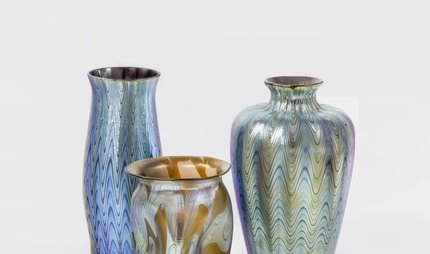
Abguss-Sammlung Antiker Plastik
Face to face with emperors and philosophers
A quote from Roman Emperor Marcus Aurelius reads: "Time is a river of passing events, and strong is its current". Since time immemorial, man has tried to oppose this torrent. Marcus Aurelius' truism, uttered before his death in 180 AD, holds true to this day thanks to an art form popular in the ancient world: the sculptural reproduction of heads or entire bodies. You can admire this three-dimensional technique today in the Antique plaster-cast collection of the Free University of Berlin. The exhibition of the Abguss-Sammlung Antiker Plastik includes the entire history of sculpture from antiquity in the 3rd millennium BCE to 500 AD.
Impressions from Berlin's Abguss-Sammlung Antiker Plastik
The birth of this sculpture museum marks the first Berlin collection of this kind. It opens in 1696 in the Akademie der Künste. Unfortunately during the Second World War most of the castings are damaged or destroyed. The reconstructed collection has been located in the western part of Berlin since 1988. Close to Schloss Charlottenburg, the entrance of the collection is located romantically under overhanging trees. Here you will find Cycladic sculptures of the Minoans and Mycenae. A naked discus thrower stands in the room, ready to throw his disc. Admire the human anatomy and how precisely the artist portrayed the musculature. In many sculptures from the Hellenistic era, you'll find allusions to Greek mythology. A nice example of this is the sculpture of the Farnese Bull. According to legend, the twins Zethus and Amphion bind their aunt on the horns of the beast as punishment for mistreating their mother. The sculptures of the Roman and Byzantine empires are slightly less dramatic. Scholars are presented in elegant togas, the garment of Roman citizens. Art from Mesopotamia and Egypt is also on display in this collection.
Features of the Abguss-Sammlung Antiker Plastik
- From Julius Caesar to Marcus Aurelius: casts of Roman Emperors.
- Cast of the Farnese Bull.
- Cast of a discus thrower.
- Examples of modern sculptural art.
Museums and collections in the vicinity
A roughly 10-minute walk brings you to the Keramik-Museum in the vicinity of the Gierkeplatz. The museum features over 7,000 exhibits from the 19th and 20th centuries. Just a few steps from the Abguss-Sammlung Antiker Plastik is the Scharf Gerstenberg collection, which focuses on surrealism with works by Dalí, Margritte and Dubuffet. Directly opposite on the other side of the road you'll find the Museum Berggruen. This museum presents important works of classical modernism by Pablo Picasso, Paul Klee, and Georges Matisse to name a few. The Bröhan Museum is right next door. Selected exhibits present the history of Art Nouveau, Art Déco and functionalism. The Bröhan Museum, Museum Berggruen and the Scharf Gerstenberg Collection are part of an architectural ensemble around Schloss Charlottenburg. You should visit the castle, too: the Baroque Hohenzollern residence is regarded as the most important in Berlin.
Our tips for your visit
Reach the Abguss-Sammlung Antiker Plastik on bus routes 309 and M45 (Schloss Charlottenburg) and U-Bahn lines U7 (Richard-Wagner-Platz) and U2 (Sophie-Charlotte-Platz). Alternatively, you use the Ringbahn lines S41, S42 and S46 to Westend. Motorists will be able to find a parking place at Charlottenburg Palace. Admission is free. Guided tours are subject to a minimum charge of €40. A visit is recommended if you like to draw: undisturbed, you can refine your technique in the exhibition space.
Opening hours
| Thursday | |
|---|---|
| Friday | |
| Saturday | |
| Sunday |
| Thu - Sun | 2pm - 5pm |



